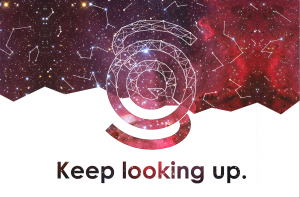Inspiring Stories – Instagram Infographics to Share Space Science
In this EPEC Inspiring Outreach Story, Lanre Logan, Space Exploration Systems Masters student at the University of Leicester, tells us how to share passion for science on Instagram.
I love sharing what I’m passionate about; you might know the feeling. There’s a topic you’re enthralled with, and it’s all you can manage not to talk to your friends about it…all the time! When it comes to science it can be exactly the same, except in this case it’s vitally important that we share this information with others.
By communicating science to a few friends, or especially to the wider public, you are helping the scientific method work. Afterall, who are these discoveries being made for if not the wider world? On a local scale, sharing a scientific tidbit or a recent discovery could lead somebody to think “Huh. I want to know more”, become inspired, and launch their own career in the field!
Personally, I simply find great satisfaction in getting to the crux of a topic and getting a deeper understanding of how a physical concept works. Furthermore, being able to instil the same feeling in others is even more gratifying.
The rise of social media has made this an even more accessible possibility where people don’t need to sift through endless journals or newspapers to find the latest developments. Simply following their favourite YouTube channel or Instagram page can give them all the science stories they need.
I hadn’t considered all of these possibilities when I began Straight Outta Quantum (I hope you get the pun), but I am all the more satisfied for knowing them now.
At first, I was in the position I mentioned earlier – I couldn’t stop talking my friends’ ears off about a new astronomy fact that I’d learned, figured out, or had recently been turning over in my head. I’d always have something I was eager to share with people, and then it hit me: I had Photoshop skills I could combine with my love of science and explain my favourite ideas through Instagram!
The freedom that the Instagram medium brings is a welcomed break. The topics which I write about are mostly content from the courses I have studied, a fact somebody has told me in passing which piqued my interest, or a science video I watched which intrigued me to research further. Before I even realise I want to make a post, I’ll have caught myself turning over the details of it in my head (while I should be revising!) The challenge then is turning it into a story.
If you’ve read any of my posts before, you may not have realised that they are essentially mini narratives, as simply posting the facts line by line would convey the information, but not in any manner that will encourage the viewer to read on. Once I’ve summed up my points coherently, all the while picturing how I’d like each slide to look, the drawing begins! Each slide of course compliments the lesson I’ve written, but to decide how they’ll specifically look I mostly think to myself: “What will look the most exciting?”
For example, instead of showing a diagram of a comet’s constituents, why not draw it rushing past you in the dynamic vacuum of space? All my graphics are made in Adobe Photoshop Elements, purely by myself, and from conception to posting I spend about two weeks between each publication. However, seeing as this began as a hobby, I don’t keep to any strict schedule and mostly work on the posts when I like!
To figure out how to break down complex information into reasonable chunks, I realised communicating science like this successfully comes down to three factors: how comprehensive vs abstract my graphics are, the detail vs brevity of the explanations, and the scientific accuracy vs artistry of my depictions. It’s fun finding the balance with these as too much of any would be detrimental. For instance, I strive to maintain scientific accuracy while still making posts artistic enough to be eye-catching and memorable. Similarly, more detail allows for a deeper understanding of the ideas but too much is of course unmanageable, and not what Instagram users tend to stick around for. Fortunately, I know my audience well through their responses to previous posts, for instance, ones with more words on each slide don’t do as well, most likely because they look less welcoming to read. Once I’ve chosen the key messages of the story I try to add as little to that as possible while keeping it coherent, as this follows my chosen mission statement of simplicity.
Inspired by YouTube channels such as Kurzgesagt and PBS Spacetime, my vision is to share aspects of astronomy and other science which I find interesting. Simple infographics are my chosen information vessel, explaining things from astronomical events such as “The Great Jupiter-Saturn Conjunction”, to more obscure facts such as that “Stars Aren’t Star Shaped. Your Eyes Are”. I believe science should be accessible and making it as easy to follow as possible is my target, even encouraging my followers to see astronomy facts for themselves by reminding them to ‘keep looking up.’
In the end, Straight Outta Quantum serves as a great pastime for me, creating designs about space; both things I love. I don’t know exactly where it’s going, or where it will end up, but I suppose that’s part of the journey when it comes to outreach. There are limitless forms it can take, anybody can do it, and if you enjoy sharing your interests then it is a great option.
I love sharing what I’m passionate about. Do you?
You can find my page here: @StraightOuttaQuantum. I hope you enjoy it, and keep looking up!
Do you like this story and want more? Browse our archive of EPEC Inspiring Stories and get inspired!


